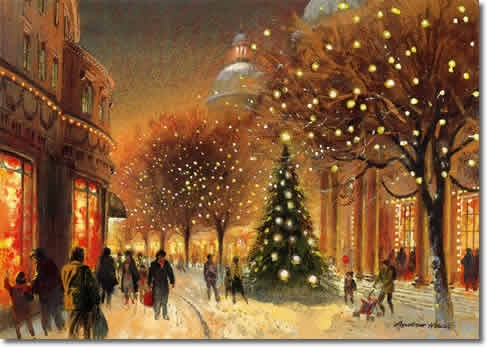Unlocking the Garden: Symbolism and Salvation in Oscar Wilde's "The Selfish Giant"
Oscar Wilde, a master of wit and prose, possessed a unique gift for writing fairytales that enchant children while simultaneously offering deep, resonant truths for adults. Among his most beloved and poignant works is "The Selfish Giant," a story that begins as a simple moral tale about sharing but blossoms into a powerful and moving allegory of sin, redemption, and divine grace.
Through the transformative journey of its colossal protagonist, the story explores the desolate winter of a selfish heart and the glorious, life-giving spring that comes from compassion, ultimately leading to a beautiful and transcendent salvation.
One day the Giant came back. He had been to visit his friend the Cornish ogre, and had stayed with him for seven years. After the seven years were over he had said all that he had to say, for his conversation was limited, and he was determined to return to his own castle. When he arrived he saw the children playing in the garden.
"What are you doing here?" he cried in a very gruff voice, and the children ran away.
"My own garden is my own garden", said the Giant; "anyone can understand that, and I will allow nobody to play in it but myself". So he built a high wall all round it, and put up a notice-board.
TRESPASSERS WILL BE PROSECUTED
He was a very selfish giant.
The Winter of the Soul: A Garden Walled by Selfishness
The story opens in a place of pure joy: a "large lovely garden" where children play freely every afternoon. The garden is a paradise of soft grass, sweet-singing birds, and blossoming peach trees. It is a world of innocence and happiness.
This paradise is shattered by the return of its owner, the Giant. His first words are a declaration of absolute possession:
"My own garden is my own garden... and I will allow nobody to play in it but myself."
He immediately builds a high wall around it, a stark physical manifestation of the wall he has built around his own heart. This act of selfishness banishes the children, and in doing so, banishes life itself. Spring forgets to visit, the birds refuse to sing, and the trees forget to blossom. The Giant's garden plunges into a perpetual winter, a cold, barren landscape inhabited only by the harsh forces of Snow, Frost, Hail, and the North Wind. This is the story's central metaphor: a selfish soul creates its own desolate, frozen prison.
The Thaw of Redemption: The Laughter of Children
For a long time, the Giant lives in his self-imposed winter, unable to understand why Spring is so late. The turning point comes not from a change in the weather, but from the sound of a single linnet singing. He looks out his window to see a "most wonderful sight": the children have crept back in through a small hole in the wall.
Where the children are, so is Spring. The trees have covered themselves in blossoms, the birds are twittering with delight, and the flowers are laughing. In this moment, the Giant has a profound epiphany. His heart melts as he understands the connection he had failed to see: the children are the life of the garden.
"How selfish I have been!" he said. "Now I know why the Spring would not come here."
His repentance is immediate and active. He goes out to help a tiny boy who cannot reach the branches of a tree in the farthest, still-frozen corner. This first, gentle act of kindness is met with a kiss from the child—a symbol of forgiveness and grace that completes the thawing of the Giant's heart.
An Encounter with Grace and the Promise of Paradise
The Giant tears down the wall and spends the rest of his long life playing with the children, finding true happiness in their company. He has learned that "the children are the most beautiful flowers of all." Yet, he longs to see the one special little boy who first kissed him, but the child is never seen again.
Years later, when the Giant is old and feeble, he looks out one winter morning to see a marvelous sight: the little boy is standing beneath a tree covered in white blossoms with golden branches and silver fruit. The Giant rushes out, but as he gets close, he sees that the child's hands and feet bear the "prints of two nails."
The story now transforms into a clear Christian allegory. The Giant, enraged, asks who has dared to wound the child, offering to take his sword and slay them. The child's reply is the story's most profound and moving line:
"Nay... but these are the wounds of Love."
The little boy reveals himself to be a Christ-like figure. He has not come to play, but to reward the Giant for his transformation. "You let me play once in your garden," the child says, "today you shall come with me to my garden, which is Paradise." When the children run in that afternoon, they find the Giant lying peacefully dead under the tree, covered in white blossoms.
"The Selfish Giant" is a masterpiece of symbolic storytelling. It teaches a simple lesson about sharing while simultaneously offering a deep narrative about spiritual redemption. It argues that a life closed off by selfishness is a cold and lonely existence, but that opening one's heart to innocence and love is the path to forgiveness, grace, and ultimately, eternal paradise.




Comments
Post a Comment